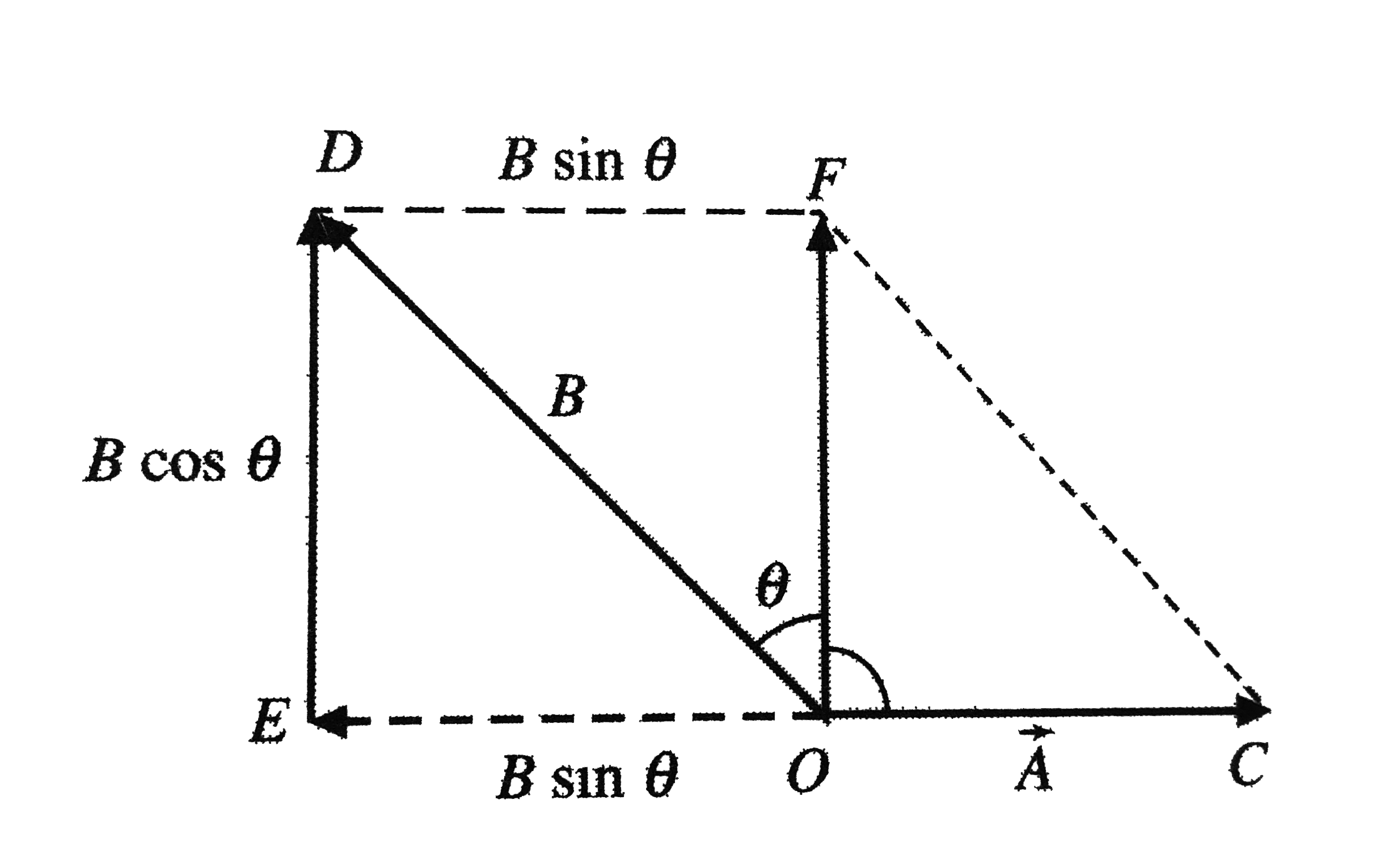The maximum value of magnitude of is
A-B
A+B
The correct Answer is:B
To find the maximum value of the magnitude of the vector difference →A−→B, we can follow these steps:
Step 1: Understand the Vector Difference
The vector difference →A−→B can be interpreted geometrically. The magnitude of this difference can be maximized depending on the relative directions of the vectors →A and →B.
Step 2: Use the Triangle Inequality
According to the triangle inequality, the magnitude of the difference of two vectors can be expressed as:
|→A−→B|=|→A|+|→B|
This equality holds when the vectors are in opposite directions.
Step 3: Set Up the Vectors
Assume:
- →A=a^i
- →B=b^i
If →A and →B are in opposite directions, we can represent →B as:
→B=−b^i
Step 4: Calculate the Difference
Now, substituting these into the expression for the vector difference:
→A−→B=a^i−(−b^i)=a^i+b^i=(a+b)^i
Step 5: Find the Magnitude
The magnitude of the vector difference is:
|→A−→B|=|(a+b)^i|=a+b
Step 6: Conclusion
Thus, the maximum value of the magnitude of →A−→B occurs when the vectors are in opposite directions and is given by:
Maximum value=|→A|+|→B|
Final Answer
The maximum value of the magnitude of →A−→B is |→A|+|→B|.
---
The vector difference →A−→B can be interpreted geometrically. The magnitude of this difference can be maximized depending on the relative directions of the vectors →A and →B.
According to the triangle inequality, the magnitude of the difference of two vectors can be expressed as:
|→A−→B|=|→A|+|→B|
This equality holds when the vectors are in opposite directions.
Assume:
- →A=a^i
- →B=b^i
If →A and →B are in opposite directions, we can represent →B as:
→B=−b^i
Now, substituting these into the expression for the vector difference:
→A−→B=a^i−(−b^i)=a^i+b^i=(a+b)^i
The magnitude of the vector difference is:
|→A−→B|=|(a+b)^i|=a+b
Thus, the maximum value of the magnitude of →A−→B occurs when the vectors are in opposite directions and is given by:
Maximum value=|→A|+|→B|
The maximum value of the magnitude of →A−→B is |→A|+|→B|.
Similar Questions
Knowledge Check
Resultant of two vectors →Aand→B is of magnitude P, If →B is reversed, then resultant is of magnitude Q. What is the value of P2+Q2 ?
A2(A2+B2)B2(A2−B2)CA2−B2DA2+B2Given that →aand→b are two non zero vectors, then the value of (→a+→b)×(→a−→b) is,
A0Ba2−b2C→a×→bD−2→a×→b
if →a=ˆi+ˆj+2ˆk,→b=ˆi+2ˆj+2ˆk and |→c|=1
Such that [→a×→b→b×→c→c×→a] has maximum value, then the value of ∣∣(→a×→b)×→c∣∣2 is (a) 0 (b) 1 (c) 43 (d) none of these
View SolutionThe resultant of two vectors →A and →B is perpendicular to the vector →A and its magnitude is equal to half of the magnitude of the vector →B. Find out the angles between →A and →B.
 .
.
View SolutionIf →A=2ˆi+4ˆj and →B=6ˆi+8ˆj and A and B are the magnitudes of →A and →B, then find the value of A and B
View SolutionThe ratio of maximum and minimum magnitude of the resultant of two vectors →A and →B is 3:2. The relation between A and B is
View SolutionResultant of two vectors →Aand→B is of magnitude P, If →B is reversed, then resultant is of magnitude Q. What is the value of P2+Q2 ?
View Solution→a,→band→c are unit vecrtors such that ∣∣→a+→b+3→c∣∣=4 Angle between →aand→bisθ1 , between →band→cisθ2 and between →aand→b varies [π/6,2π/3] . Then the maximum value of cosθ1+3cosθ2 is
View Solution
